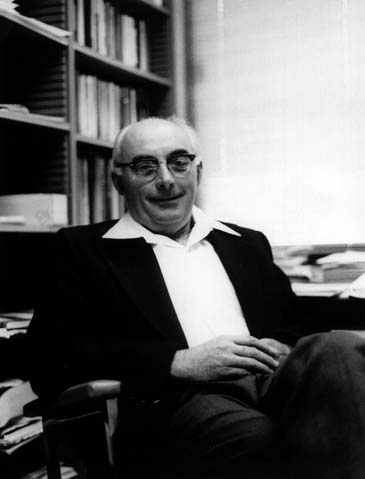Personnes
Lucien Le Cam
18 Nov 1924 - 25 Apr 2000Le Cam got his early mathematical education in Paris despite the nonrational factor of WW2, which was then going on in his vicinity. He later liked to tell how he and Simone Signoret had danced in the streets when the city was liberated in 1944.
Well, maybe it was not actually Simone, but allowance must be made for the excitement of the time.
After the war, Le Cam was employed as a statistician with Electricité de France; he published his first papers on statistical theory in 1947 and 1948. He took a year's leave from the firm in 1950 to accept an invitation from Jerzy Neyman to lecture in Berkeley. Berkeley, not to put it too crudely, was where things were happening. In Berkeley Le Cam remained for the rest of his life: fifty years to the day.
He blossomed immediately into his new horizon of opportunity. His celerity was remarkable. He completed his Berkeley PhD thesis in six months of work (1952), and immediately, despite the misgivings of the Dean, supervised his own first PhD student (1953). His work, a few years later, on such topics as the LAN or locally asymptotic normality condition (1960) is part of the architecture of modern statistics.
An epitome by his student and collaborator Grace Yang includes these memories:
Mr. Le Cam, as we students called him, was well-known for his deep and mathematically hard lectures. The students were in awe of how rich and how challenging his lectures were. We could follow him generally but were left behind in details. He lectured from general to particular and never used notes. He would not have approved of me now reading from my notes.
I remember his first lecture on asymptotics well. He said he will discuss 17 different types of convergence of probability measures. He then wrote 17 of them on the blackboard without missing a single one. It was an eye-opening and inspiring experience. Years later, I learned that Lucien had a photographic memory.
The students worked very hard on his course and had numerous group discussions back then, in the temporary building after the class. Many of us stayed in contact after graduation, we felt we had survived as a group.
And David Brillinger recalled Le Cam's teaching style this way:
I knew Lucien best in the Department Coffee Room. This came to be his domain, or perhaps I should say his locally convex vector space. Jerzy Neyman, the Statistics Department's founder, was Lucien's mentor and great admirer. He dearly wished Lucien to follow him as Director of the Statistical Laboratory. When Professor Neyman was away, Lucien typically chaired his Seminar. On the day that Neyman died [5 August 1981], Lucien opened with the words, "The Seminar will go on." And it did. Lucien took it over. Lucien had a special style in chairing the seminar. He would let everyone who had questions ask them, and then at the very end, he would say something like "I have one small question." That question would go right to the heart of the matter, there would be further discussion, and then we would go to the Faculty Club for drinks and Professor Neyman's three toasts. It was all quite magical.
Le Cam retired in 1991, but continued mathematically active until shortly before his death on 25 April 2000.
In an interview in 1988, Le Cam brought out cogently what it is that defines statistics. The question was "How do you distinguish between mathematics and statistics?"
Le Cam: In statistics -- well, you have the mathematical part of it, one has to be able to handle the concepts, but you also have the fact that the concepts are not very clean. The idea of probability, of randomness, is not a clean mathematical idea. You cannot produce random numbers mathematically. They can only be produced by things like tossing dice or spinning a roulette wheel. With a formula, any formula, the number you get would be predictable and therefore not random. So as a statistician you have to rely on some conception of a world where things happen in some way at random, a conception which mathematicians don't need to have.The next question dealt with why one should study statistics. It brought out the French side of Le Cam: his experience of a world over which one has little control:
Le Cam: If you perceive the world as some place where things happen at random -- random events over which you have sometimes very little control, sometimes fairly good control, but still random events -- well, one has to be able to have some idea of how these things behave. . . People who are not used to statistics tend to see things in data -- there are random fluctuations which can sometimes delude them -- so you have to understand what can happen randomly and try to control whatever can be controlled. You have to expect that you are not going to get a clean-cut answer. So how do you interpret what you get? You do it by statistics.Q: Do you think that the general public can be made more statistically sophisticated?
Le Cam: Well, it could be done. What should be done is to introduce people, at least in high school, to the idea of random things, random events. Once you get that basic concept, the idea, then the rest is easy.
[from Albers, More Mathematical People]
And so it is. The key word is "once."
4 Sept 2004 / Contact The Project / Exit to Reference Page
